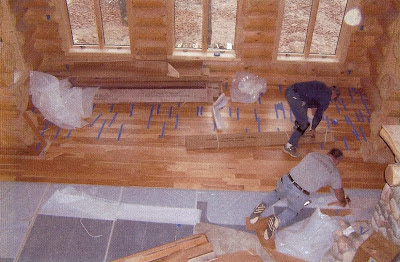Because the logs are round and will settle around six inches the kitchen cabinets couldn’t be nailed directly to them. The installers first put up boards which were attached to the logs with sliding bolts and then the cabinets were nailed to these boards. That way the logs could shrink without buckling the cabinets.
I had a list of 13 things I wanted in my kitchen like varying cabinet heights, a couple of glass doors, lattice doors under the sink, deep drawers, a coffee garage, a bead board back splash, a counter depth refrigerator with cabinet doors, uba tuba granite, and most importantly, an Elmira stove. We took our plans to three kitchen designers who drew up sketches and priced out standard, stock, and custom cabinets. Amazingly the lowest bid came from the custom cabinets by North Country Cabinets. Scroll down their page and you’ll see that our finished kitchen made it onto their website.
I had a list of 13 things I wanted in my kitchen like varying cabinet heights, a couple of glass doors, lattice doors under the sink, deep drawers, a coffee garage, a bead board back splash, a counter depth refrigerator with cabinet doors, uba tuba granite, and most importantly, an Elmira stove. We took our plans to three kitchen designers who drew up sketches and priced out standard, stock, and custom cabinets. Amazingly the lowest bid came from the custom cabinets by North Country Cabinets. Scroll down their page and you’ll see that our finished kitchen made it onto their website.














